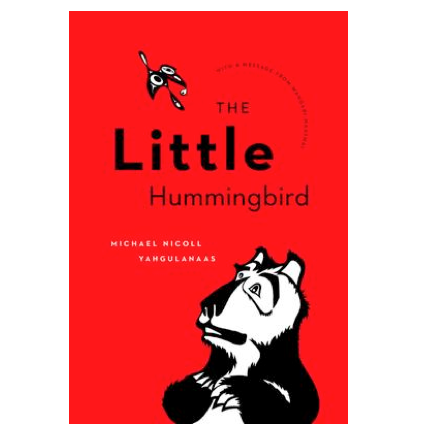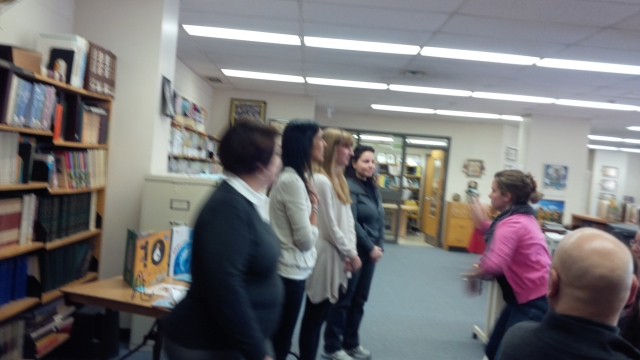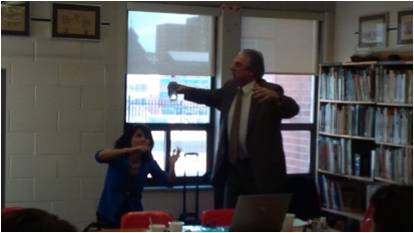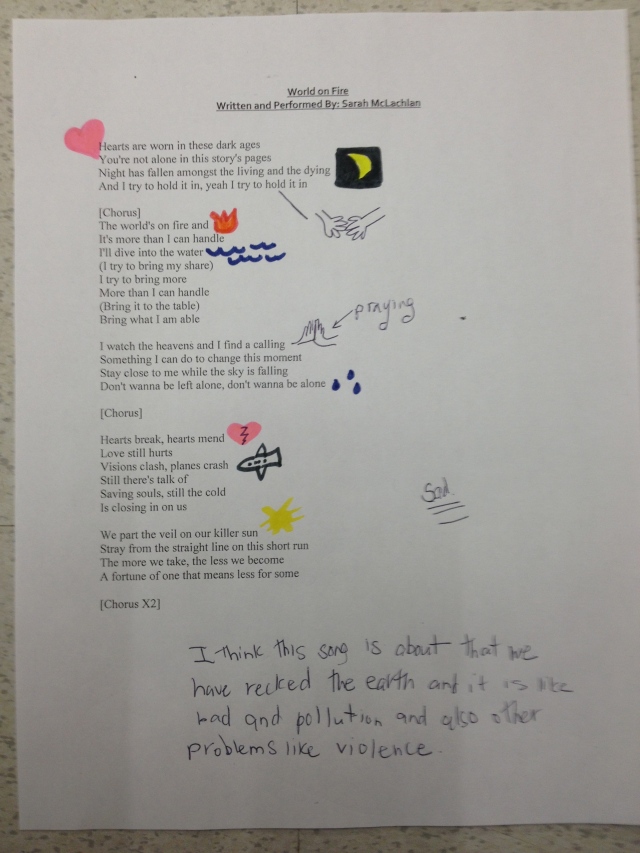Teachers involved in our Literacy Inquiry Teams in Area 1 and 2 were interested in exploring strategies that would support students to more effectively respond to texts. They noted that students had difficulty with written responses that required them to demonstrate their understanding of the text and also challenged them to extend their understanding beyond the text. (Reading for Meaning Expectation 1.6 in the Ontario Curriculum). We began our learning by considering the role of “talk” and collaborative learning structures in supporting students to develop and extend their understanding of a text, prior to crafting a written response.
How does talk develop and extend our understanding of a text?
Understanding is deepened when we provide students with many and varied opportunities to talk about a text. Our Literacy Inquiry Team worked on the understanding that talk is essential to both reading and writing…..
“Reading and writing float on a sea of talk.” James Britton
The teachers in our group discussed the importance of providing students with:
- time to prepare for and participate in discussions with diverse partners
- an opportunity to build on each other’s ideas
- encouragement to express their own ideas clearly and persuasively
- structures that support collaboration
The group also shared a number of talk moves that enhance understanding:
- using evidence to probe and reflect
- connecting ideas from several speakers
- acknowledging new information
- yielding and gaining the floor
- posing and responding to questions
- explaining ideas
- explaining the ideas of others
It is through talk that the students explore different perspectives, dialogue about big ideas, build knowledge, and clarify ideas.
|
Big Ideas are the broad, enduring understandings that should be retained even if the many details of study may not be. Big ideas go beyond discrete facts or skills or fragments of knowledge; they focus on larger concepts, principles or processes that develop over time and support students in future learning endeavours. The curriculum expectations and the instructional focus are the building blocks that deepen understanding of the big ideas. Big ideas are transferable beyond the scope of a particular unit of study. They can be thought of as the meaningful patterns that enable one to connect the dots of otherwise fragmented knowledge. School Effectiveness Framework K-12, 2010 |
How does talk develop and extend our understanding of a text?
The group worked through an example together by using the picture book: The Little Hummingbird by Michael Yahgulanaas.
Before reading, the group shared ideas about the cover of the text. They considered the use of colour, font and photos using think-pair-share.
Think-Pair-Share
Each person has an opportunity to quietly think before engaging in a discussion. On a sticky note, record your ideas, thoughts, and questions. Then, students pair up with a partner and share their thoughts, ideas, or questions.
(TCDSB: Building Independence in Comprehensive Literacy; 2011)
Value Line
The value line was used before reading to activate prior knowledge and to establish a mind set about one of the big ideas in the text.
The facilitators asked: “Can one individual make a difference?” The teachers reflected on the question and determined if they agreed or disagreed. Each individual then stood at some point on the value line. Following this, we discussed our individual points of view.
A Value Line offers students the opportunity to express their opinions and listen to opposing points of view. A question or issue is posed and students reflect on it and determine where they stand on the value line. Generally three options are offered: strongly agree, strongly oppose or not sure. Students stand in the appropriate place on the imaginary line. They stand in a place along the line that expresses how strongly they feel about the question posed. They are then responsible for supporting their point of view and they exchange thoughts with others who may have similar or opposing points of view.
(Guide to Effective Literacy Instructions Grades 4-6. Volume One .Ministry of Education)
Make It Alive
After reading, the teachers used visuals, drama, music, spoken word/poetry and dance to express their interpretation of the text. These creative interpretations included word chants, tableaus and a visual recount of the text. Teachers worked in groups to collaboratively create these interpretations. They shared their understanding of the big ideas in the texts and discussed how the text connected to their lived experiences. We agreed that deep interpretations were possible once the big ideas had been highlighted.
Make It Alive….
In this structure, students work in a small group to collaboratively create a short dramatic, or artistic interpretation of a text.
(TCDSB: Building Independence in Comprehensive Literacy; 2011)
Co-Planning/Co-Learning
Together, the group also applied the strategies explored in a classroom setting through a co-planning, co-teaching, co-learning experience. We worked together in a grade 5 classroom at Josef Cardinal Slipyj. The lead teacher used some of the following strategies.
Sketch to Stretch
The lead teacher used the lyrics to World on Fire by Sarah McLaughlin to inspire and engage students. We found that it was interesting to use lyrics as a text. Students engaged in a sketch to stretch activity as they analyzed the lyrics.
Students worked together in small groups to reflect on the lyrics and consider the message in the text. In the first example, the students commented on the way in which we have taken poor care of the earth and the need to act more responsibly. In the second piece the students commented on how the world is a “hard place and sometimes we are happy about good things and sad when things get bad.” Later, the teacher provided them with an opportunity to connect and build on the ideas of others.
As a result, their thinking was developed to a deeper level and they began to discuss possible solutions to the problems expressed in the song lyrics.
Mind Map
The students then worked in a small group and used a mind map to express the big ideas in the text.
These photos capture the students’ collaboration. As a result of this work, they discussed some big ideas in the text: we can all do something about the poverty that exists in the world; we all have the power to make a difference, and it is our responsibility to take care of the earth.
What we learned…
- Talk serves to enhance students’ written responses to a text
- Students need to be given many varied opportunities to talk, prior to engaging in a written response to a text
- Questioning strategies support students to think deeply about a wide variety of texts (picture books, song lyrics, media texts, etc.)
- Intentionally planned talk moves facilitate rich conversations
- Co-operative learning structures build collaboration and support oral language development
- The arts can be used to support students to uncover the “big ideas” in texts
- Prompts and scaffolding structures support students to understand the text and extend their thinking beyond the text
- Rich texts include big ideas that are aligned with our Catholic social teachings







I love the ideas expressed and the concrete examples of how to enrich students learning through talk. I will try these ideas in my primary classroom.
Brilliant! love all the opportunities for students to build understanding and express their thinking!